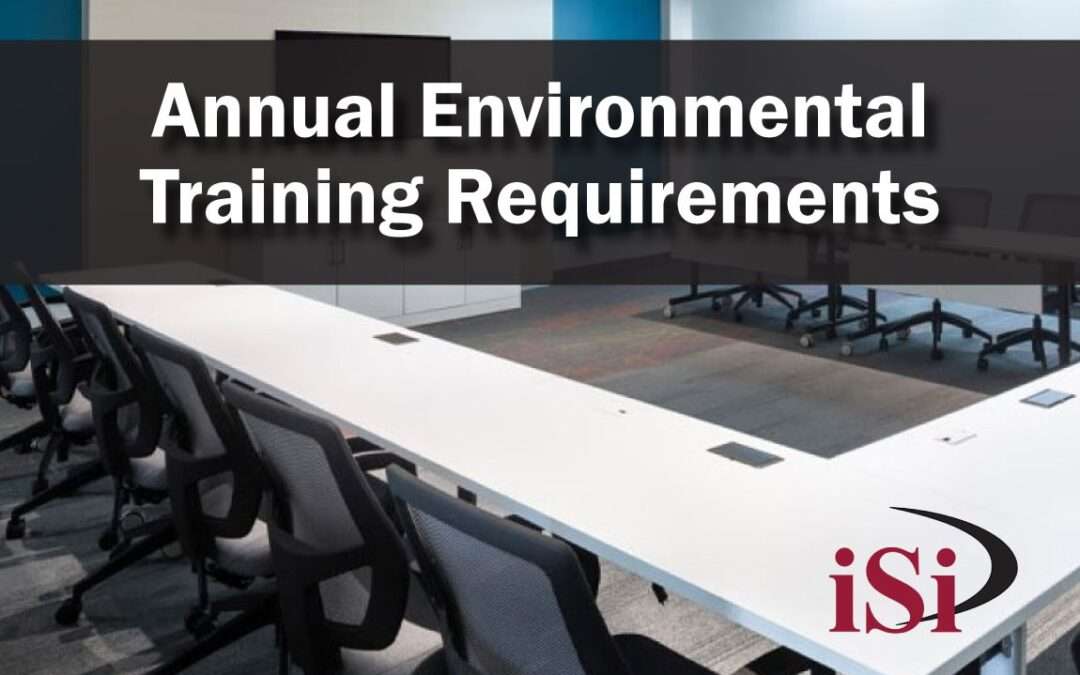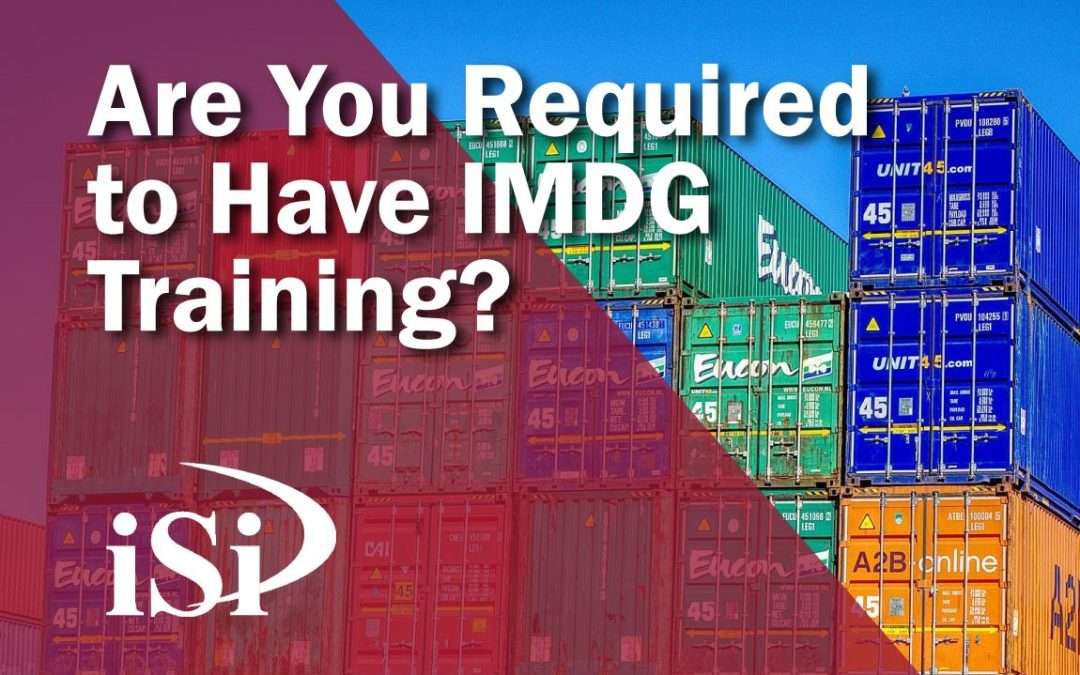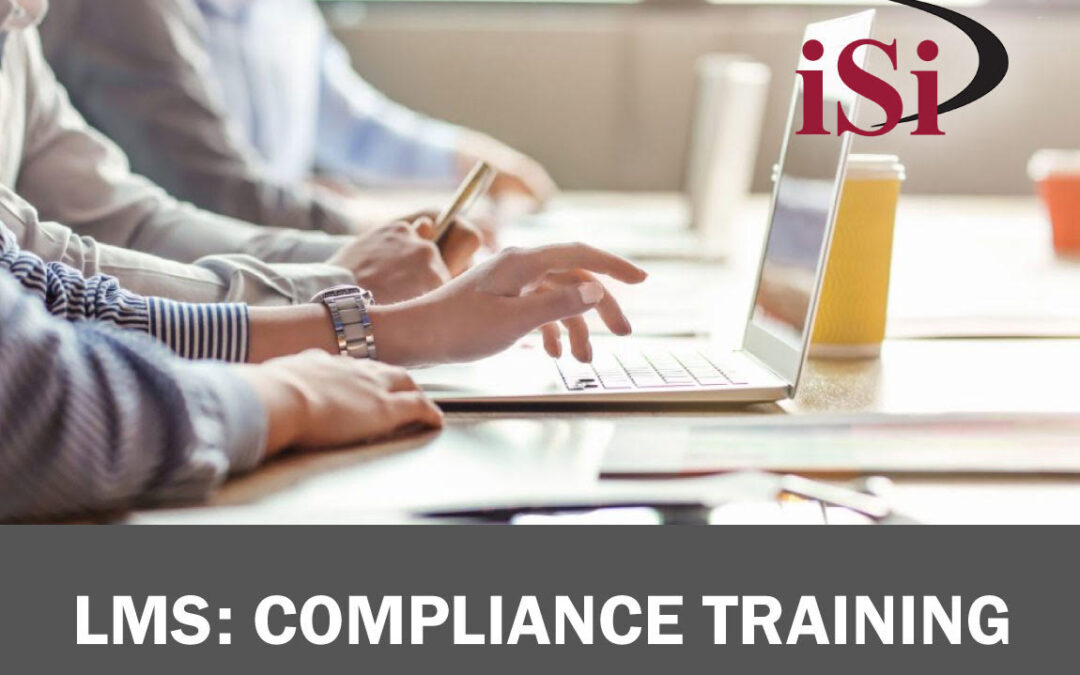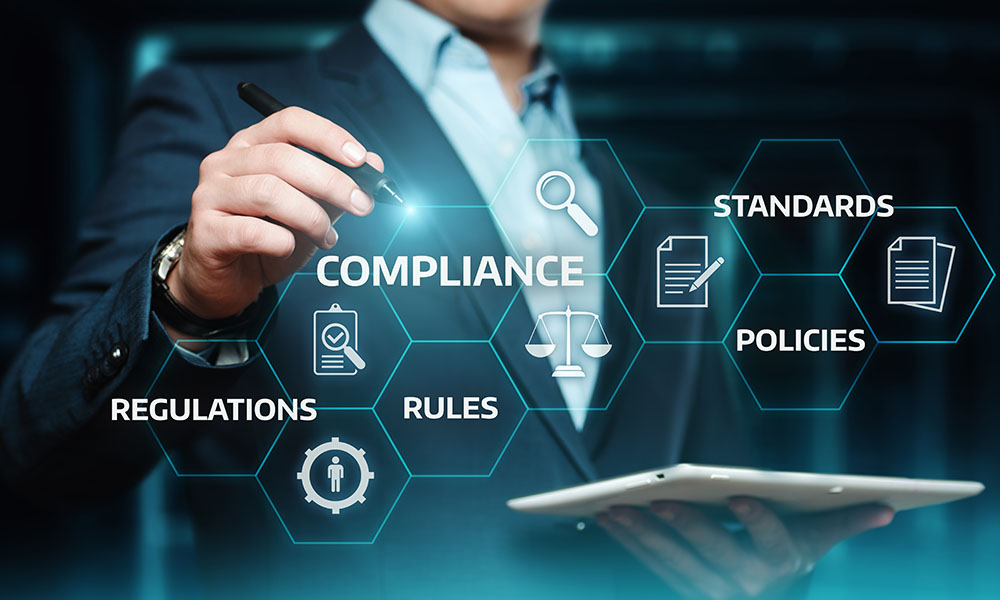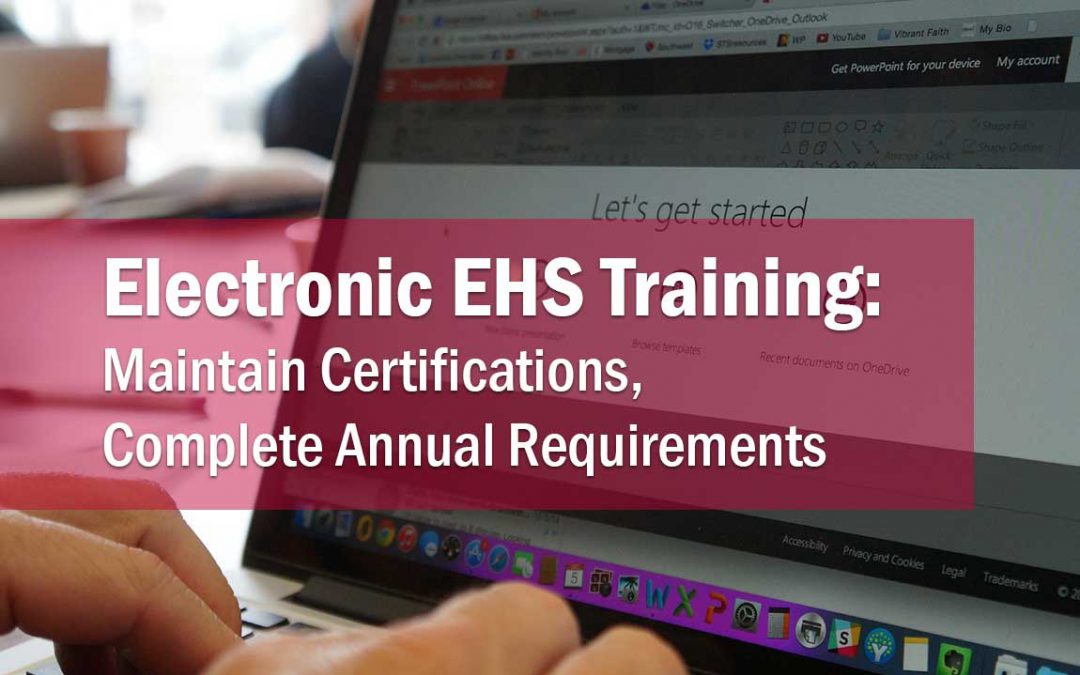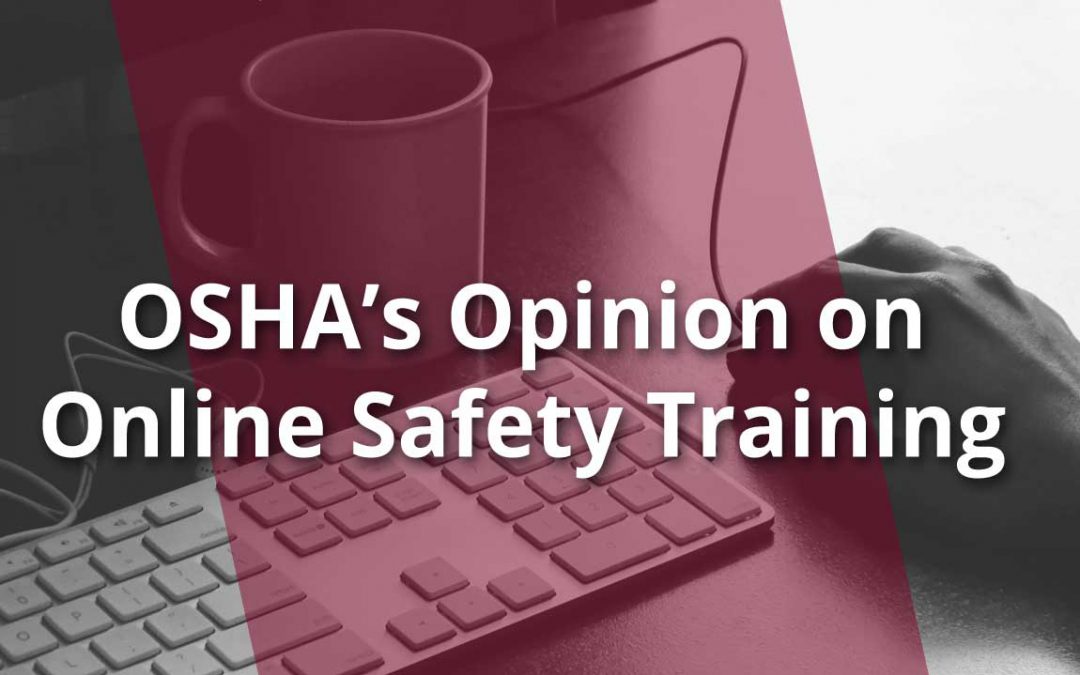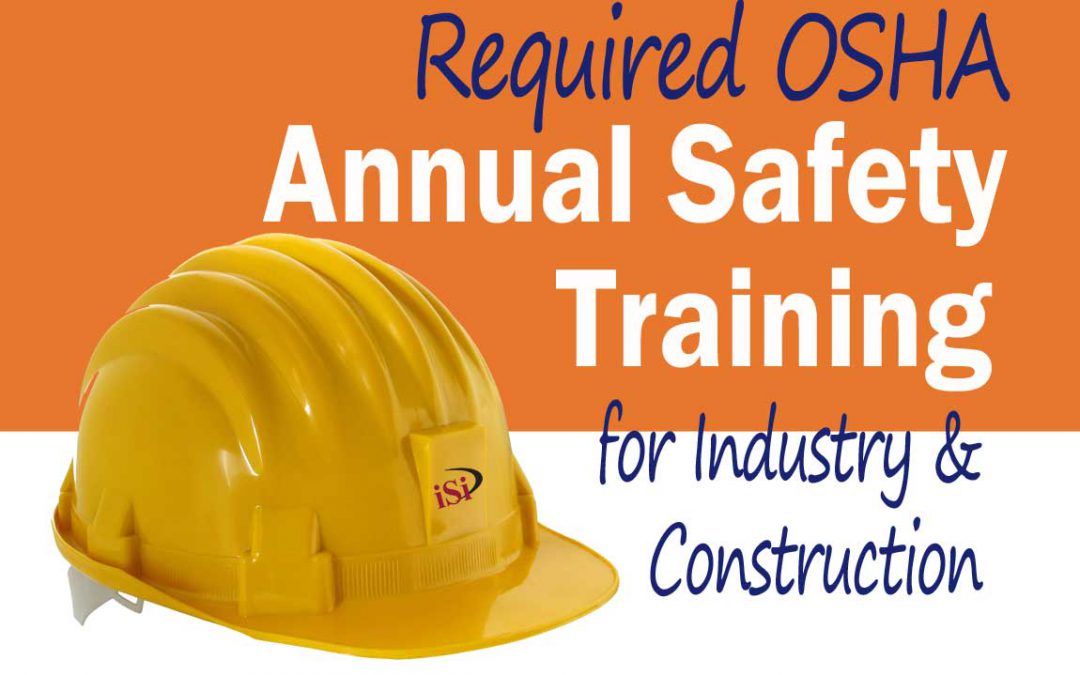
Which Annual Safety Training Requirements Should You Add to Your Calendar?

Annual safety training is a best management practice and is most often required when conditions in the workplace change. However, the OSHA standards don’t specifically require annual safety training for all of its topic areas, just a handful of them.
Employee Access to Medical Records
This is one of the most overlooked requirements and one of the top items which pops up in our safety compliance audits. Annual notification for employee access to medical records is required. As a company you’re required to inform workers of their rights to access their medical records, where they’re kept, how to obtain them and who is responsible for keeping them. This applies to both general industry and construction – the construction standard references the general industry standard, 1910.1020.
Respiratory Protection and Fit-Testing
Employees wearing respirators or participating in your company’s respiratory protection program are required to receive annual training regarding respirator use, care, inspection, maintenance, limitations and other requirements. In addition, employees must be fit-tested in their respirator annually. That is, each employee should be tested to ensure the seal is still fitting their face and protecting them. There are standard fit-testing procedures to use to accomplish this item. This applies to both general industry and construction and the construction standard references general industry standard 1910.134.
Hearing Protection
If your employees are exposed to noise at or above an 8-hour time weighted average of 85 decibels, your company is required to have a hearing conservation program. As part of this program, annual training is required. Ensure you post a copy of the occupational noise exposure standard in your workplace and make any and all training materials related to this available to your employees. Hearing conservation programs are required by both general industry and construction.
HAZWOPER
Employees responding to hazardous materials spills, conducting hazardous substance removals, or working at Resource Conservation and Recovery Act (RCRA) corrective action or treatment, storage, and disposal facility (TSDF) facilities are required to have hazardous waste operations and emergency response (HAZWOPER) training. There are various levels of HAZWOPER. Those with 24 and 40 hour initial training are required to have 8 hours of training annually per year. Annual training requirements for HAZWOPER can be found in 1919.120 for general industry and 1926.65 for construction.
Bloodborne Pathogens
Anyone with potential bloodborne pathogen exposure potential in general industry must have annual training and additional training whenever procedures and tasks are changed. Those who conduct first aid in construction are required to have training in hazards associated with bloodborne pathogens, as well as employees conducting maintenance activities, those collecting or separating wastes (sharps), or who could be exposed to blood or other potentially infections material as part of their job.
Fire Extinguishers and Fire Brigades
If your company provides portable fire extinguishers or other fire-fighting devices for designated employees to use in the workplace, training is required annually. For employees designated to inspect, maintain, operate or repair fixed fire extinguishing systems, annual training reviews are required. Fire fighters in shipyard operations are required to have semi-annual drills and annual training for fire watchers.
If your company houses an internal fire brigade that fight fires beyond the incipient stage, all fire brigade members are to be provided with annual training. Any members who are required to conduct internal structural firefighting are to have quarterly educational sessions or training as well.
Fire protection programs must be developed for all phases of construction and demolition jobs and, as a result, employers shall provide firefighting equipment and a trained and equipped fire fighting organization (fire brigade/group of employees that are knowledgeable, trained and skilled in the safe evacuation of employees during emergency situations and in assisting in fire fighting operations).
Confined Space Rescuers
Those who conduct confined space rescue are supposed to hold practice drills once per year. This applies to both general industry and construction.
Asbestos and Other Chemical and Substance-Specific Training
Anyone exposed to asbestos at or above permissible exposure limits are required to have annual asbestos awareness training. Maintenance personnel who may disturb asbestos within the course of their duties are also required to have annual awareness training. Those who conduct Class I through IV asbestos operations (removal activities) are also required to have annual training through the construction standards.
Employees with potential exposures to OSHA 1910.1003’s 13 carcinogens, vinyl chloride, polyvinyl chloride, inorganic arsenic, lead, cadmium, benzene, coke oven emissions, cotton dust, acrylonitrile (vinyl cyanide), ethylene oxide, formaldehyde, Methylenedianiline (MDA) and 1, 3-Butadiene are required to have annual safe usage training. Many of these are referenced individually in both the general industry and construction standards, but the construction standards will often reference the general industry standard rather than having separate rules. Construction has specific rules for cadmium, chromium, ethylene oxide, lead and MDA.
Others Worth Mentioning
Mechanical Power Presses – Operators of mechanical power presses with the Presence Sensing Device Initiation (PSDI) mode on them are required to have annual operator training.
Agriculture Industry – In grain handling facilities annual training is required for workers at grain handling facilities. Topics to be covered include dust hazards, dust accumulation, ignition control and prevention, cleaning/clearing/housekeeping procedures, hot work procedures, preventative maintenance, lockout/tagout and bin entry and engulfment hazards (for those entering bins). In other agriculture-related workplaces where employees are required to use tractors, annual training regarding rollover protective structures is required and those using farm field equipment, farmstead equipment and cotton gins are required to have safe operating and guarding training annually.
Logging Industry – Supervisors and employees in logging industry operation are required to have annual CPR training, with first aid training every 3 years.
Every 3 years – Because of their prevalence in industry, we thought we’d also mention that forklift recertifications are due every 3 years as is refresher training for Process Safety Management.
Lockout/Tagout – Not necessarily a training requirement, but an annual requirement nonetheless, employers are required to review their energy control procedures at least annually to ensure the procedure and the requirements of the lockout/tagout standard is being followed.
Environmental Training
Looking for annual EPA and environmental training? In addition to annual safety training, check out our article regarding annual environmental training requirements your company should schedule for the year.
Need Help?
Are you low on staff to conduct your own safety training? Tired of dealing with generic videos? We can help! Check out our onsite safety training and customized training options.
Environmental Training
Now that you’ve learned what safety training is required annually, learn more about what environmental training is required annually.
Questions?
Does this apply to your company? Do you have questions? Contact us!
Receive News to Your Inbox
We send our articles by email whenever we add a new one. Don’t miss out! Sign up for our blog today.
Request a Quote
iSi can provide assistance in this area. How can we help? Ask us for a price quote.
